A Singer, A War Correspondent, and An Activist
Redefining the muses of famous Surrealist Artists
muse1
/myo͞oz/
noun a person or personified force who is the source of inspiration for a creative artist.
When I was young, my sister and I became obsessed with the idea of a muse because of a video game. In this game, an artist bemoans losing his muse, begging the protagonist to find his muse and bring it back. The muse in question was a cat, and once retrieved, we could return to the village and watch as he carved a sculpture of said cat. As you can imagine, the cat was very cute, and we being young loved it and endeavored to find our own cute little muse.
In the years since I’ve painted and drawn my own muse - my chubby senior dog - and often proclaim him as such. I’m still enamored by the idea of a muse, though that might be in part due to my annual campaign to convince my family that we should all dress as the muses from Hercules for Halloween (I would be Melpomene). And yes, I’m always fascinated by the muses of famous artists.
The concept of the muse, while alluring, has its pitfalls and has often created a two-dimensional persona of many people throughout history. As an artist and writer, I can attest that many people in my life are ‘muses’ to my work, people whose vivaciousness and deep introspection have informed much of my own work, but history has often limited muses (especially women muses) to nothing more than inspiration.
Unfortunately, this is no different with Surrealism. While Surrealism is considered to be the first art movement to include women artists, it would be naive to say it was without its flaws in how it treated women. Maybe women in Surrealism started as muses and went on to create their own body of work, the best example of this being Lee Miller.
However, one does have to note many of the ideals surrounding women within the Surrealist group focused not just on sexuality but on youth. Max Ernst was 46 when he entered into a relationship with 20-year-old Leonora Carrington. He was about 55 when he married Dorothea Tanning, who was 36 at the time. Man Ray was 17 years older than Lee Miller when he first met her. Andre Breton’s third wife, Elisa Breton, was 37 to his 47 when they met. Evidently, age differences didn’t quite matter.
As for the treatment of women, Man Ray may be the best example of the pitfalls there. Though not necessarily reflective of the ideals of Surrealism, Man Ray was once so infuriated that a former lover was leaving him for another man that he stripped her of her clothes and beat her senseless with a belt so that her new lover would see the damage he left. While it is important to note that domestic abuse was largely normalized at this time, that doesn’t make what Man Ray did okay. Even by those standards, his behavior was abhorrent.
In reading The Lives of Lee Miller by Carolyn Burke, one of the things I found most interesting was the discussion of fidelity and sexuality among the Surrealists. Lee Miller, like many of her Surrealist contemporaries, had an open relationship with Roland Penrose. She also posed in several pieces for Man Ray exploring lesbianism from the male perspective (which, let’s be honest, is the most common perspective. But I digress).
The implication made in this biography was that lesbianism was accepted by the Surrealists, as well as the swinger lifestyle, but only if it meant swapping wives. Homosexuality was not directly attacked, but it wasn't encouraged. Instead, a way that a man would show sexual interest in another man in the Surrealist circle was to offer up his wife as a lover.
I bring this up because I want it to be clear how complex the Surrealists were. They were open about sex, but then not entirely. They preached Marxism, but then they left the Communist Party. They had women artists, but then abused and treated them as mere muses and beneath them. It’s not a simple this or that.
That being said, the lives of these ‘muses’ were also complex. Some created, some didn’t. Some pursued a life in art, some didn’t. Some rose to prominence, some still sit in obscurity. Some like to model, some openly oppose it.
My intent today is to shed light on three Surrealist Muses, to show them as the women they were, not just the inspiration for the men of Surrealism (and in the case of one, the inspiration for the biggest male artist of the 20th Century). I won’t do a deep dive, but give you a chance to get to know each of them. In the case of Lee Miller, there are multiple books (and now a film!) that shed light on her incredible life. For the other two, their stories are just barely being told. But let’s sink into their world.
Kiki of Montparnasse
I feel like I need to confess that despite what I revealed earlier, I don’t hate Man Ray. I actually love his work. That he’s from my native Philadelphia unfortunately only helps his case, but I can acknowledge his work is good but his personhood is trash. When I say I like Man Ray, know I mean I like his work. But we’re not talking about Man Ray, we’re talking about Kiki, arguably the great love of his life.
Alice Ernestine Prin was born on October 2 1901 in Châtillon-sur-Seine, Côte d'Or France. She was the illegitimate daughter of a local man and was raised in poverty by her grandmother. From a young age she would live on the streets, eventually disowned by her mother when she discovered she would model for artists for money. To make something of a living, she would post nude for painters and sculptors and eventually became a popular model.
She soon became the center of the Montparnasse social scene, which was booming for Bohemians and artists alike. Kiki’s magnetic personality and quick wit earned her admiration and esteem. She was even called the Queen of Montparnasse.
What is often not known of her was that Kiki was also an artist. She painted and drew, and would try to sell her work to people in the early days of her modeling. She learned in a similar vein to Suzanne Valadon (my queen), studying those who used her as a model. Like Suzanne, Kiki’s bright personality and curvy figure was part of what drew people to her. While at times people would askew buying her art in favor of her flashing them for money, she did find success in selling her paintings. It’s possible she would have risen the ranks as a prominent artist had she not fallen in love with one.
When Kiki met Man Ray, the chemistry was instant. Man Ray wanted to photograph her and asked right away, but she rejected him. A nude painting or sculpture was one thing, but she didn’t want nude photos of her to circulate. Man Ray, however, did not let up, and she finally agreed. Their first encounter was awkward, but soon they found that chemistry translating onto film, and Kiki moved in with Man Ray.
Their relationship was tumultuous, and it has come into question whether or not Man Ray himself prevented her from fully pursuing an art career. Aside from her social life, Man Ray expected her to keep house so he could work on his photography. He even controlled her makeup and physical looks, using her charm and social graces to rise in society. While Man Ray focused on his photography, Kiki experimented with various forms of art.
She starred in about nine experimental films, her bright personality shining through. Man Ray himself experimented with film, and would even use Kiki in his films. Timid at first, Kiki started singing in public. First to friends, then the crowds would grow. Edith Piaf considered Kiki a rival to her career. Edith. Piaf. Unbelievable. We’ll get there.
I think the best way to understand why so many were drawn to Kiki is in the 1927 film ‘It’ starring Clara Bow. Kiki had It. She was gorgeous, funny, talented, and optimistic. It was noted that before her untimely death, she was seen to be happy and excited for what lay ahead. There’s a story that Kiki was walking up the stairs, and upon noticing a friend was behind her, went down on all fours to crawl up. The friend in question (a man), pulled up her skirt over her head and drummed on her butt. Kiki laughed and they continued up the stairs in this manner, simply to have fun. Honestly, she sounds like a riot.
One can maybe see how Man Ray would want to temper her fame. Kiki had it all, she was popular, good-looking, and could easily become a famous artist. She had her first who in 1927 and sold out of all her paintings at the Galerie au Sacre du Printemps in Paris. Her pieces were in an expressionist style, showing various portraits, landscapes, animals, and social scenes. Oddly enough, I haven’t been able to find any pictures. When I look them up, I just get the many paintings done of Kiki, not by Kiki.
Man Ray did not appear at her show, and hardly mentioned it in his memoir. After eight years, the two went their separate ways. A source of heavy contention between them was that Kiki would express her love for Man Ray, who would brush off love as ‘useless’ and ‘a waste.’ Can you imagine? Eight years with someone and they refuse to say they love you? Despite this, the last time the two would run into each other, Kiki would run into his arms and nearly knock him over. Knowing everything I know of Kiki, I’m not even a little surprised. And yes, she met Lee Miller. They didn’t get along at first, but soon they found they were quite fond of each other.
In the 1930s, Kiki would go on to start a new path in her life. She owned the Montparnasse cabaret L’Oasis where she regularly performed. In time, it would be called Chez Kiki. The woman once known as the muse of Man Ray and perhaps more so as the Queen of Montparnasse wooed audiences as she sang and danced to risqué songs. It was said she had a way of pausing, capturing the audience's rapt attention, and drawing them in before singing again. And again, Edith Piaf saw her as a rival.
Unfortunately, the delightful Kiki passed away at the age of 51 in her beloved Montparnasse on April 29th, 1953. Her struggles with alcoholism and drug abuse ultimately led to her demise. It was said that when Kiki died, a movement died with her. The roaring 20s bohemian madness of Montparnasse was wasting away as Kiki got older. When asked if she was bothered that she didn’t have the same appeal she did in her youth, Kiki was known to brush it off and talk about how delighted she was to have so many paintings and sculptures done of her. And she was known to say Man Ray never photographed anyone as well as he photographed her.
While I’d love to agree, the woman who took hold of Man Ray’s inspiration after Kiki wasn’t just anyone. She was a damn war correspondent.
Lee Miller
I recently went to see Cigarettes After Sex in concert. I was determined to go early and buy some perch, crossing my fingers that they would have a specific album cover available on a tee or sweater. They did, but the line was so insane, so I opted to hunt it down online. I just ordered it today.
The specific album cover in question is for their 2012 EP I. which features a photo by Man Ray. As I walked around the concert venue, I was confronted by teenager after teenager wearing the sweater with Man Ray’s photo on the front. I wanted to shout, “Do you know what that is? That’s Man Ray! The surrealist! And he’s photographing Lee Miller! She’s so damn cool!” But I was already double the age of the average person at that concert and I was very annoyed I couldn't buy it right there.
Lee Miller, where do we begin? Anthony Penrose, Lee’s only son, wrote a biography on her titled “The Lives of Lee Miller.” Oddly enough, I haven’t read it and only just got a copy from the library. I stated above the copy I’ve read. I also own The Age of Light, which I’ve been afraid to read because it’s Lee Miller. How could it compare? And no, I haven’t (yet) seen the new film Lee starring Kate Winslet. It’s only showing in two theaters at limited times in my state. But so help me I will.
The fact is I know so much about Lee Miller that I could write about her in my sleep. Lee is the reason I chose to write this post, not just because I love her, but because I was shopping for art books in second-hand shops and came upon a book about the muses of famous artists with Lee on the cover. It baffled and annoyed me. How could anyone reduce Lee to a mere muse? She was so much more than that.
But let’s backtrack. Lee Miller was born on April 23, 1907, in Poughkeepsie, New York. An East Coast girl! From a young age, she was taught to model through her father who took various photos of her, including nude ones (not joking). To make matters more uncomfortable, from a young age she was raped by a family friend, something her family attempted to sweep under the table, except that Lee contracted gonorrhea as a result. She was given specialized treatments administered by her mother, and likely sustained a lifetime of PTSD as a result. Much of Lee’s life was unfortunately shaped by PTSD, but we’ll get there.
While it’s noted that Lee often acted out in school and was often threatened with being expelled, I can’t say this was a direct result of her rape. Frankly, Lee Miller was always poking fun and getting into trouble. I recently learned that Lucien Freud hated her, saying she had no manners and was disgusting (this coming from the man who fathered fourteen children from I think thirteen women? So he’s got the moral high ground). I guess the ironic part was Freud’s grandfather inspired the movement Lee would become part of.
But I’m getting ahead of myself. Perhaps the reason why Lee Miller is seen often as a muse is because of her early career. While in Manhattan at the age of 19, she was almost hit by a car when none other than Condé Nast saved her. Enamored by the woman he just saved, Condé Nast decided to hire her as a model. Lee was gorgeous and athletic and quickly became one of the most popular models of her time.
In her twenties, Lee became obsessed with the idea of the ‘modern woman’ and took a special interest in the life of Lorelei Lee in Gentlemen Prefer Blondes (which I recommend for a funny read) (it’s nothing like the film with Marilyn, which I also love). In the 1920s, she sported the fashionable short haircut and was always the center of attention at any party. It’s suspected that Condé Nast himself might have had a special interest in her (he was known to make passes as just about all of his models).
Lee took an interest in art and was able to draw well, but believed that everything that ever needed to be painted or drawn was already drawn (gonna have to disagree with you there Lee), so she set her sights on photography. At this point, Photography was still a new advent in the world of art, and some didn’t consider Photography a legitimate form of art. It would take innovators like ooooh I don’t know Man Ray to change the minds of the public. And in 1929, Lee traveled to Paris intent on finding Man Ray and becoming his apprentice.
She approached him and insisted she was his new student. Man Ray turned her down but found he couldn’t resist Lee. So he took her in, photographing her, teaching her his craft, and entering into a relationship with her.
What baffles me the most is I feel like everything I’ve read implied Lee and Man Ray were together for much longer than they were. It’s clear their relationship was both intense and had an incredible impact on their lives. For Lee, this isn’t necessarily surprising as it was through her relationship with Man Ray that she developed and honed her craft, but much of Man Ray’s most important work came from this time as well.
It’s been implied that Lee was more headstrong than Kiki and thereby had a stronger influence on Man Ray’s work. It’s also been implied that she invented the tactic often attributed to Man Ray’s work known as solarization. This is false. But I get where people get that idea. The story goes that Lee was developing some of Man’s photographs in his darkroom when she felt a rat brush past her ankle. In a panic, she turned on the lights. Quickly, she realized her error and turned off the lights, but called Man to let him know. The photos should have been ruined, but the effects baffled them and Man and Lee worked on this new technique they called ‘solarization.’ Because Man Ray’s work is most often attributed to this, it’s been credited to him. Some, like I said, credit it to Lee Miller. Both cases are wrong. I did actually have the source of who originated the technique but that link has since been lost. But just trust me, okay?
At the end of their relationship, Man Ray acted in a typical Man Ray manner and created Object to be Destroyed. It features a metronome with a picture of Lee’s eye and the following instructions:
Cut out the eye from a photograph of one who has been loved but is seen no more. Attach the eye to the pendulum of a metronome and regulate the weight to suit the tempo desired. Keep going to the limit of endurance. With a hammer well-aimed, try to destroy the whole at a single blow.
Listen I love his work, but Man Ray was such a little bitch. I can’t even pull the ‘he’s from Philly’ card here.
Lee’s life after Man Ray didn’t stop. She kept creating, had her first and only solo show, went on to marry an Egyptian businessman and engineer, Aziz Eloui Bey in YEAR, and moved to Egypt. This was an excruciating time for her, one that often left her feeling confined. Frustrated with her marriage, she met Roland Penrose, who would become her lifelong love. Though they knew they wanted to be together, her marriage and life in Egypt kept them apart so they wrote to each other but accepted that Penrose would pursue sexual relations with other women.
In time she would return to Paris and Penrose, and even become friends with Man Ray, but she remained married until the war broke out in Europe. Here we see the next stage of Lee Miller’s life.
Lee Miller became the only woman to be a war correspondent during WWII. This was not an easy task for her to get into, but she managed to do so through Vogue magazine of all places (I guess we can thank Condé Nast for that?). With her artist and modeling background, she joined the American Army and entered the front lines.
We don’t know the full extent of what Lee witnessed as she destroyed many of the negatives. What we do know is already haunting. Lee and the American soldiers she traveled with, including David Scherman (played by Andy Sandberg), came upon a Nazi death camp, the sight of which she never fully recovered from. But her most famous work during this time came from a piece she coordinated with Scherman (who by the way was her lover).
Lee Miller and Scherman infiltrated Hitler’s abandoned home where they both took photographs of each other in his bathtub. The piece, coordinated by Lee, was put on the cover of LIFE magazine and is probably the most badass thing to ever happen.
Following the war, Lee never fully recovered. She couldn’t forgive the Germans, couldn’t move past the war, and found herself declining emotionally. She discovered she was pregnant at 39 and married Penrose. Lee continued her work with the army for some time, venturing behind the Iron Curtain, but eventually returned to England to enter into the life of a housewife.
In time, she would go on to master cooking and became a gourmet cook. You can even buy her cookbook! While she remained married to Roland Penrose for the rest of her life, their marriage was tumultuous and she struggled with motherhood. Her son, Anthony Penrose, had no idea about her incredible past until after her passing. At the end of her life, she found renewed meaning in her granddaughter before passing at age 70 in 1977.
Lee Miller’s family has worked hard to keep her legacy going and bring her into prominence, and I’d say they’re doing a hell of a job of it. You can now visit her home and purchase books on her writing and photography. Can you see why I was frustrated over that book?
Dora Maar
And to our final ‘muse.’ Dora Maar is a hard one to research. There’s a biography written about her in Spanish, and while I can read Spanish well, I haven’t been able to get my hands on it. My great frustration is when I try to find books or anything on Dora Maar, I’m always confronted by the title, ‘The Weeping Woman.’
This title comes from a piece that her former lover Pablo Picasso painted of her, though Dora Maar herself remarked he never really painted her. Who was Dora Maar, besides the young lover and muse of Pablo Picasso? My heavens she was so fricken cool.
I'm going to brush over her biography and go straight into her work. To be honest, she's a favorite of mine and I'm obsessed with her photos. Dora Maar isn’t an obscure figure because she didn’t do anything, in fact, she did quite a bit. She’s less known because, after her relationship with Picasso, she became somewhat of a recluse. Picasso had once said to his former lover Francoise Gilot that she would only be known for him, and one may argue the same is true of Dora Maar. But Dora Maar was an artist before Picasso, and given what we know of how he treated women, can we blame her for wanting to get away from the public after him?
What is most startling about Dora Maar isn’t that her work was brushed aside when she found success in her time, but that her biggest contribution to art is her influence on Picasso’s activism. It should be noted Pablo Picasso was known to be largely apolitical. He was not apolitical in the way Dali was, where Dali would flip-flop around. What I mean is Picasso was in such a high position of privilege that he could afford to stay out of politics entirely. Then he met Dora Maar and the Spanish Civil War began.
Dora Maar didn’t share in his apolitical leanings. She photographed the effects of the Depression in Barcelona and London, and she was actively opposed to the rise of Fascism. Dora went on to join a political group that spoke out against fascism. This activist streak, this part of her that photographed the poor and took notice of the world around her, would have a profound effect on Picasso.
By the time Picasso rolled out, Maar was already exhibiting and had her own studio she ran with the help of her father. She introduced him to her activist leanings and brought him to an awareness of politics, particularly to the rise of Francisco Franco and fascism in Picasso’s home country of Spain.
In America, we don’t study the Spanish Civil War, so I apologize to any of my European friends if I sound redundant. Frankly, I still find it infuriatingly confusing to read up on and I’ve been reading on it for years. What is often not understood in modern America is how the Spanish Civil War took center stage in the minds of many in its time. To see the Spanish people fight one another and to witness the rise of Francisco Franco, who would remain in power until his death in 1975, was almost unheard of. During this time, there was a rise in Marxist leanings and Communist Party members who were alarmed at the rise of Fascism in Europe, and many saw the Spanish Civil War as a personal war.
Like I said, we don’t talk about it here in our contemporary America. But it’s important to hammer this in as it’s a large reason why Pablo Picasso’s seminal work Guernica was so impactful. And yes, I’m saying you wouldn’t have Guernica without Dora Maar. I don’t doubt that for a second.
Guernica is a reference to the bombing of the Basque town by the Spanish in league with the Nazis. It was a form of testing out Kamikaze warfare that would later inspire Lee Miller to become a war correspondent. Now, in Spain there is the Basque region (Euzkadi in their language), an ethnic group of people who have their own language and culture separate from Spain. The history of these people is fascinating, and as I discovered recently, is my history! My dad has Basque ancestry! Throughout Spanish history, the Basque people have been targeted and even oppressed, leading to the rise of Basque Nationalism and leaders such as Sabino Arana. You see, people like Arana (who I must note passed long before the civil war but was still influential), were a bit of a thorn on Franco’s back.
Not only that, but Gernika (the original spelling) was a central point of the Bay of Biscay and prime real estate for Franco’s party. I won't go into the details of the attack and whatnot, but the attack on Gernika was horrible and it’s still debated to this day how many people died. I recommend reading up on it.
Now, tragedies in war are nothing new, but they became new to Picasso. Remember, Dora Maar went to his native Spain to photograph the tragedies of economic downfall. Of course, she knew about Gernika and of course, she hated Franco and wanted the word to get out, especially as Franco’s party denied the bombing. The famous painting’s progress was photographed by Maar as Picasso worked on it and was a controversial and shocking piece when it premiered. (by the way, if you want to read about a cool Spaniard who hated Franco and would probably be friends with Dora Maar if they ever met, please look up Joan Pujol I García)
By the 1940s, Dora Maar and Picasso’s relationship started to fall apart. They officially separated in 1946, and her life took a dark turn. Her father left Paris for Argentina, her mother died suddenly, and many of her friends went into exile. She was close friends with many Surrealists, many of which left Paris. During the war, the Nazis opposed the surrealists, many of whom had to escape to the Americas and Mexico for safety while she stayed behind.
Yet, she kept creating. Maar participated in group and solo exhibitions going into the 1950s. During her time with Picasso, he encouraged her to return to painting and she began to paint abstract landscapes and exhibited her work. It was well received, but she returned to her love of photography in the 1980s. By this point, she focused on experiments in the darkroom.
On July 16th, 1997, Dora Maar passed away into relative obscurity. Much of her work was not known until after her death and she is still not as well known to this day. What amazes me about her work is how iconic it is, and how it just commands your attention. I’ve never seen a Dora Maar piece I didn’t like. And for heaven's sake, she did that piece with the spider! I hate spiders.
Dora Maar, unlike say, Lee Miller, is still seen more as a muse than an artist in her own right. Part of this may be because she never married and had children who continued the work of sharing her art with the world. But I don’t think she needs children for that. Plenty of artists never had children and we still know and love their work (Leonardo Da Vinci… Michelangelo…. Caravaggio…). As has been noted, she was known to keep more to herself in later life, though this may have more to do with the fact that Dora Maar’s social group was spread out. I even shared a piece she did of Leonor Fini in a previous post. But the work to bring her to the spotlight has yet to happen. If we see her solely as Picasso’s muse, we’re doing her work and life a disservice.
"All his portraits of me are lies. They're all Picassos. Not one is Dora Maar.”
I want to clarify that I see nothing wrong with the concept of muses. If these three women didn’t have exhibitions and didn’t make art, they’d still be women worth knowing about. A person doesn’t need to have incredible accomplishments under their belt to be worthy of knowing. Frankly, I’d be honored to be considered a muse. My issue isn’t that these women inspired famous men in their craft, but that they are seen only as muses to the point of denying them their personhood.
Nearly every muse in history was also a person of flesh and blood with real desires, likes, dislikes, goals, and dreams. It’s when they are forced into a two-dimensional image of a person that I take issue with.
In reality, the concept of a muse is perhaps the most human thing there is. We always inspire each other. Have I not had a myriad of muses in my life? Have I not had hundreds if not maybe thousands of people that have in some way brought of spark of creative light into my life without ever intending to? And is that bad? Of course not! Seeing inspiration in one another, seeing something of a muse in each other, is part of what builds community in our lives. But reducing a person to nothing more than a muse is insulting not just to the human condition, but to the nature of art itself.
I love each of these women. I love Kiki’s vivacity and wish I could party with her. I love Lee’s bravery and go-getter attitude. I love Dora Maar’s heart and care for people. I can see why men were inspired by them, I just wish we did better to see them as the women they were, and not just the ways they were defined by men.







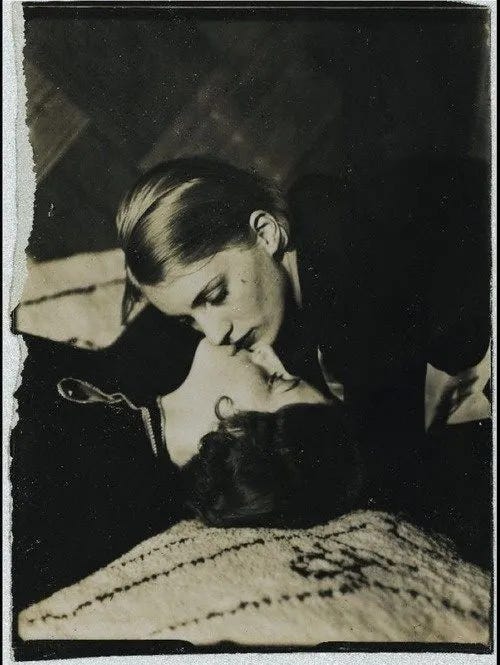
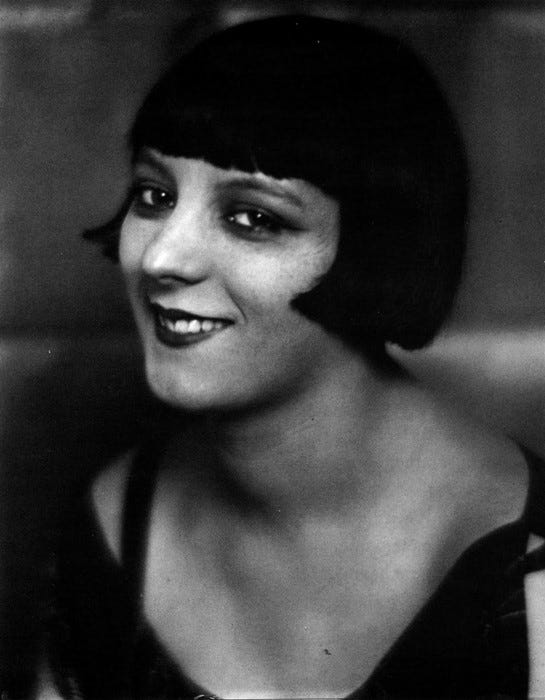
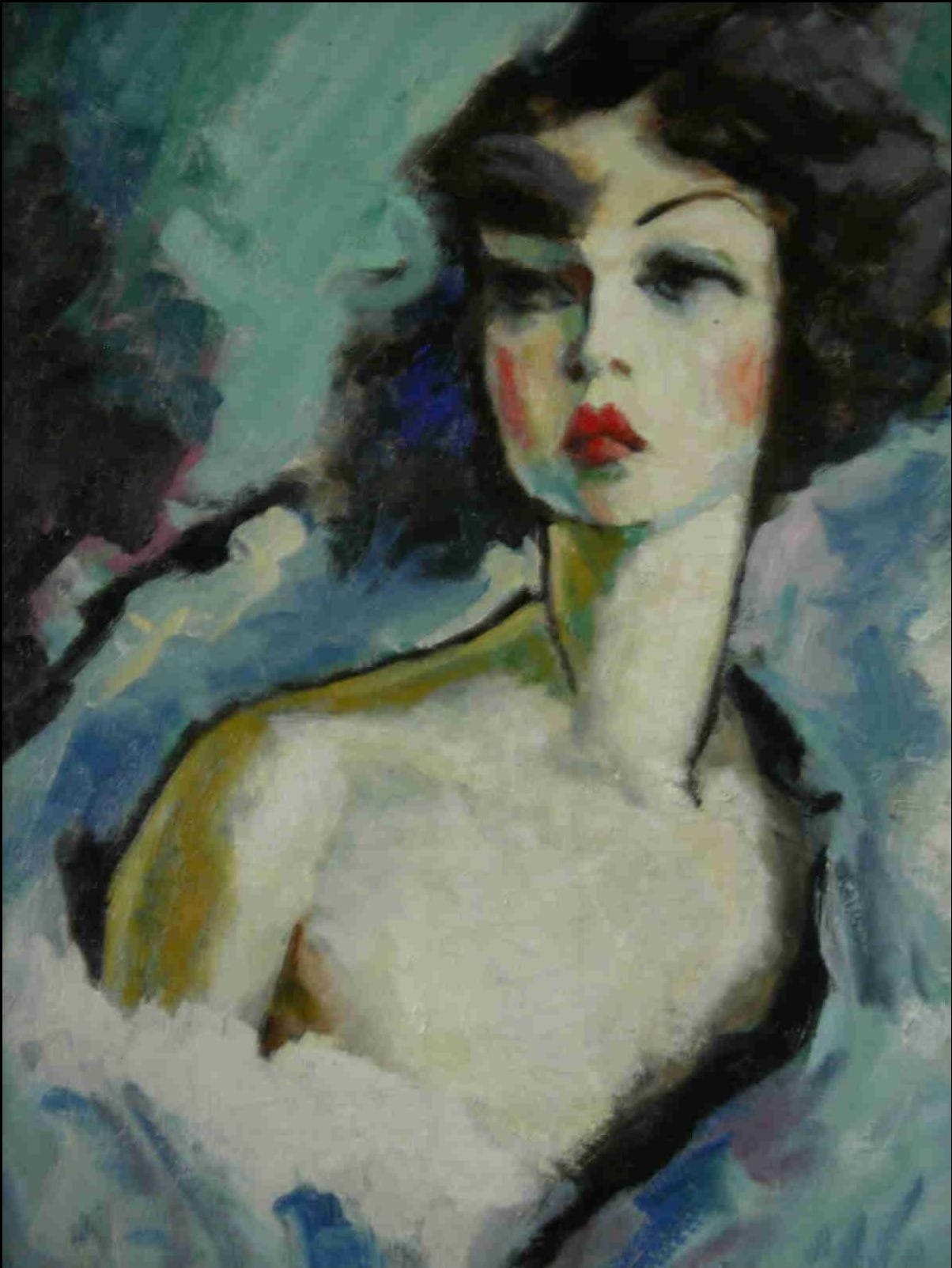



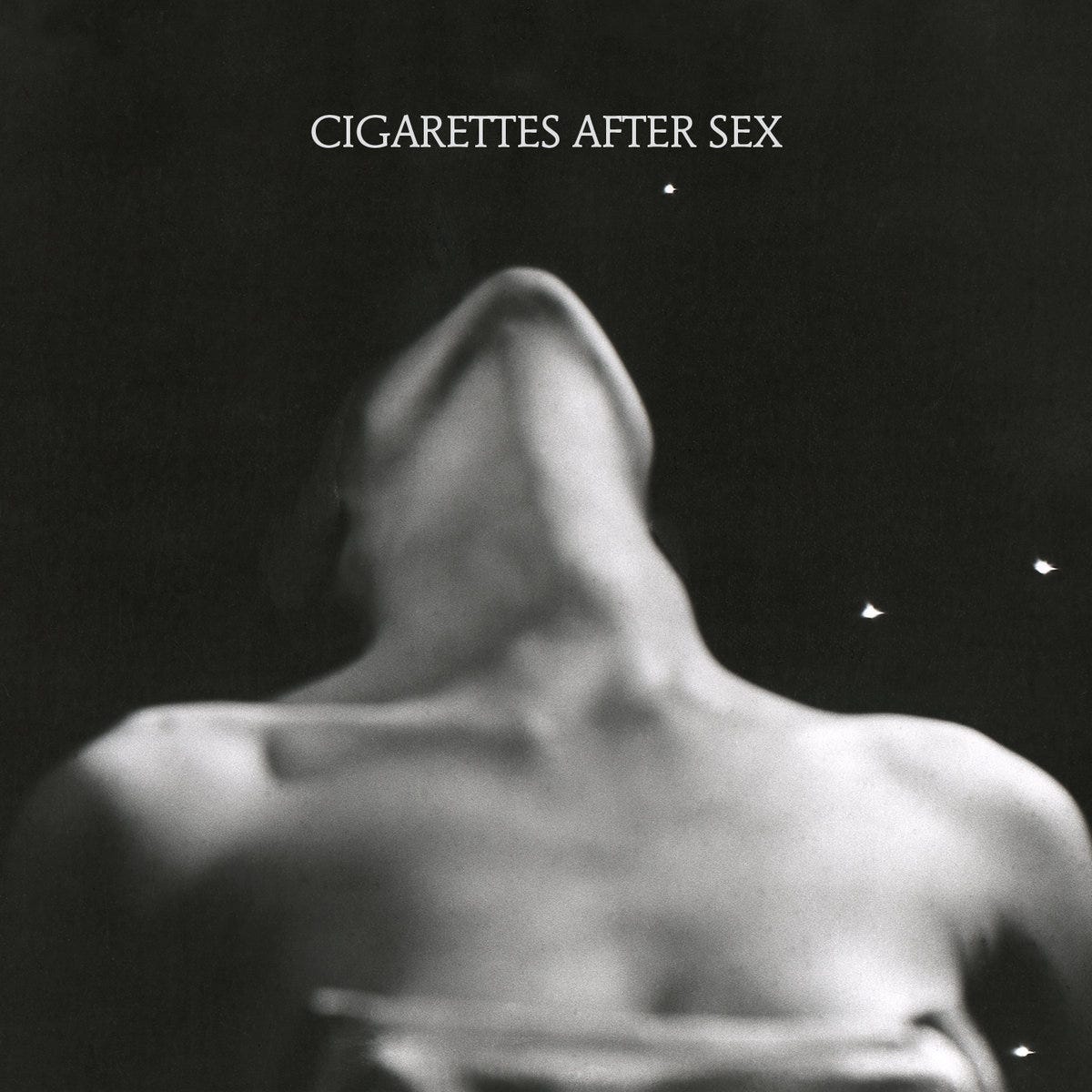

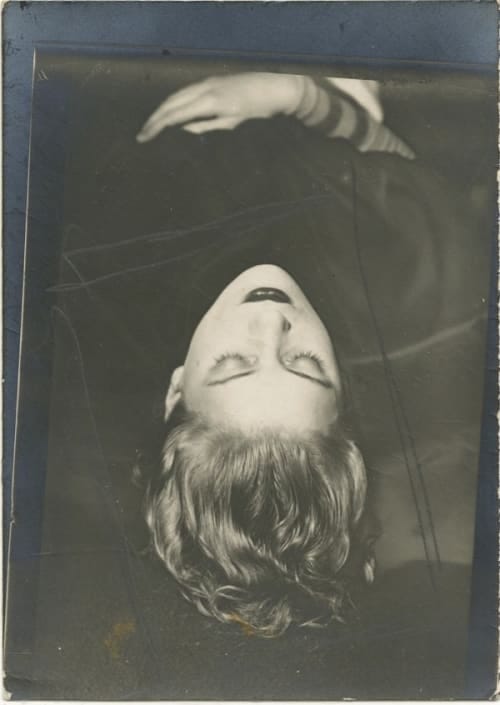

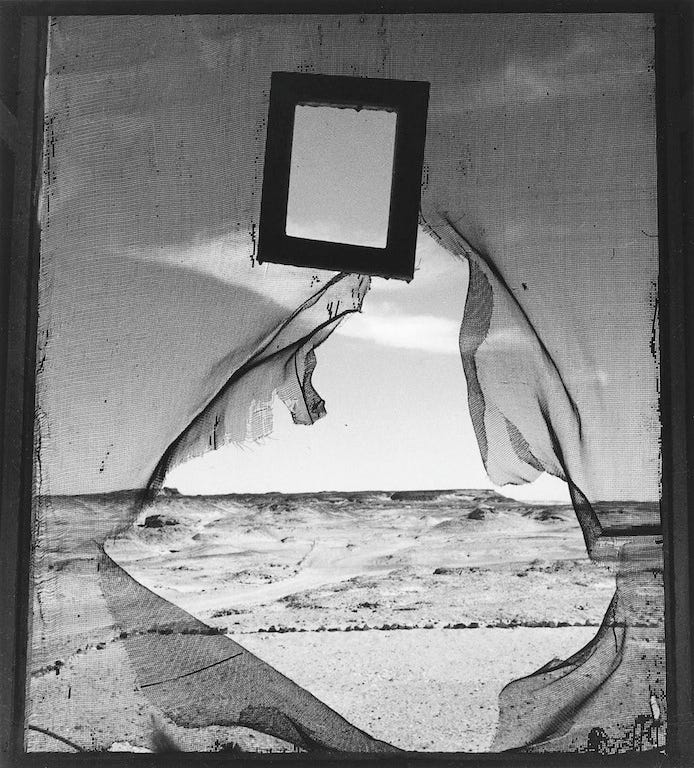
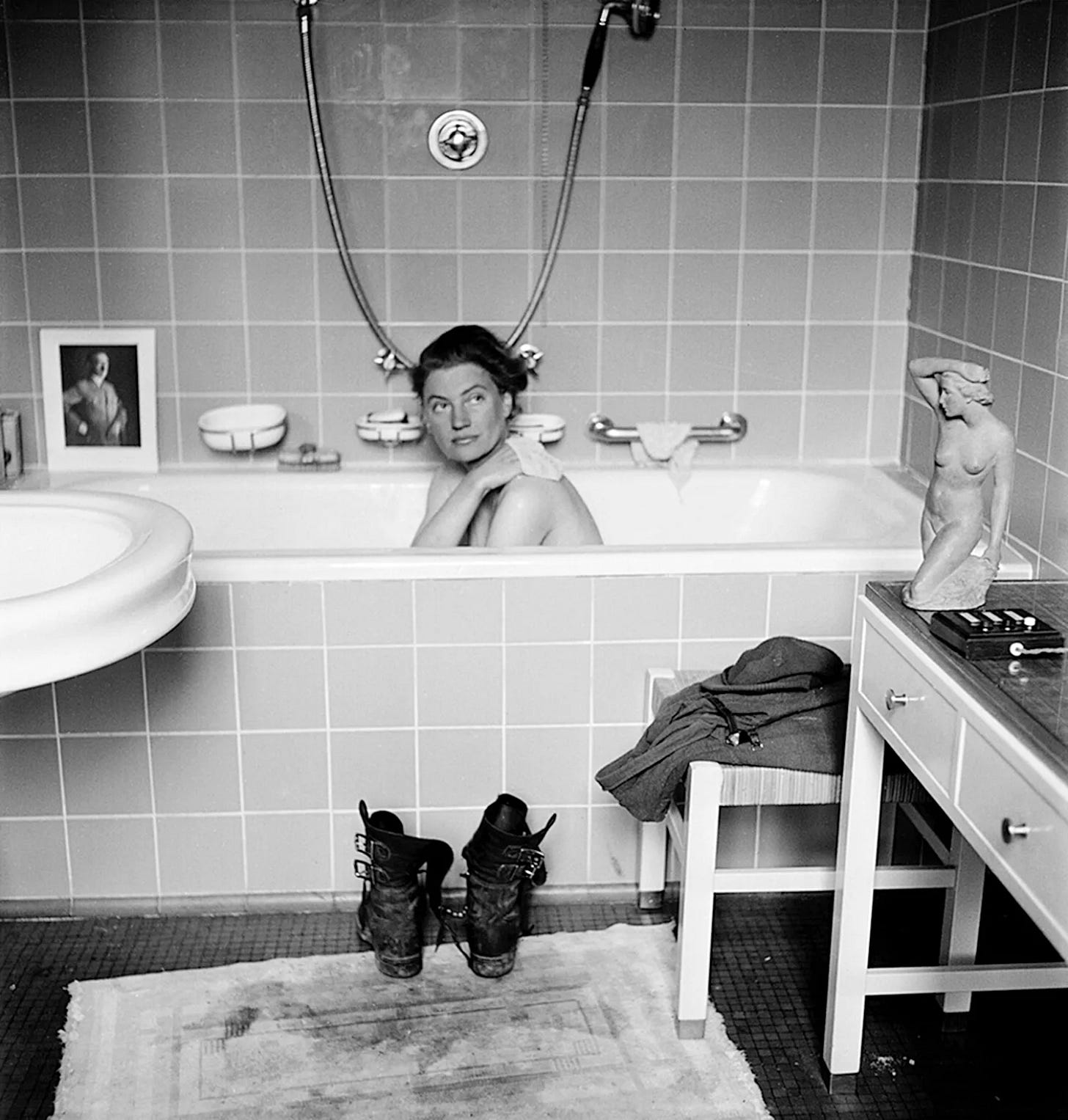

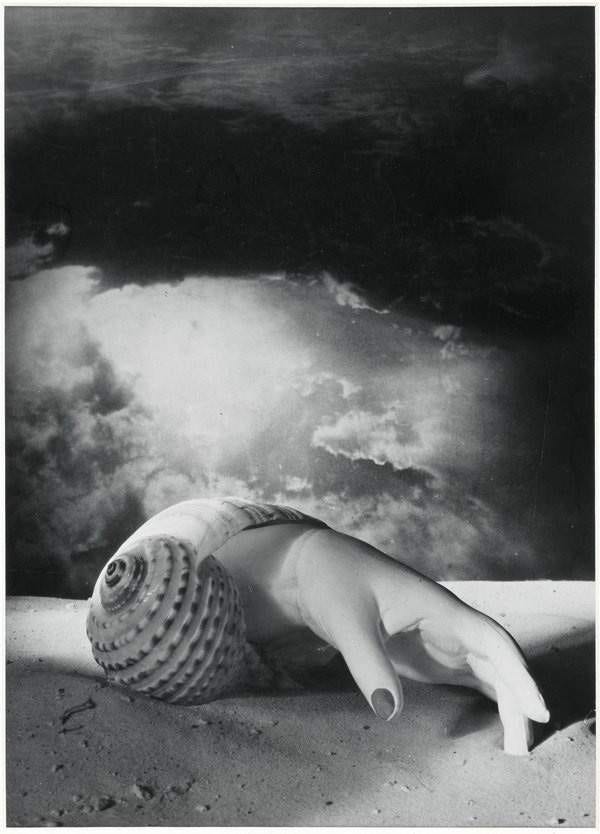



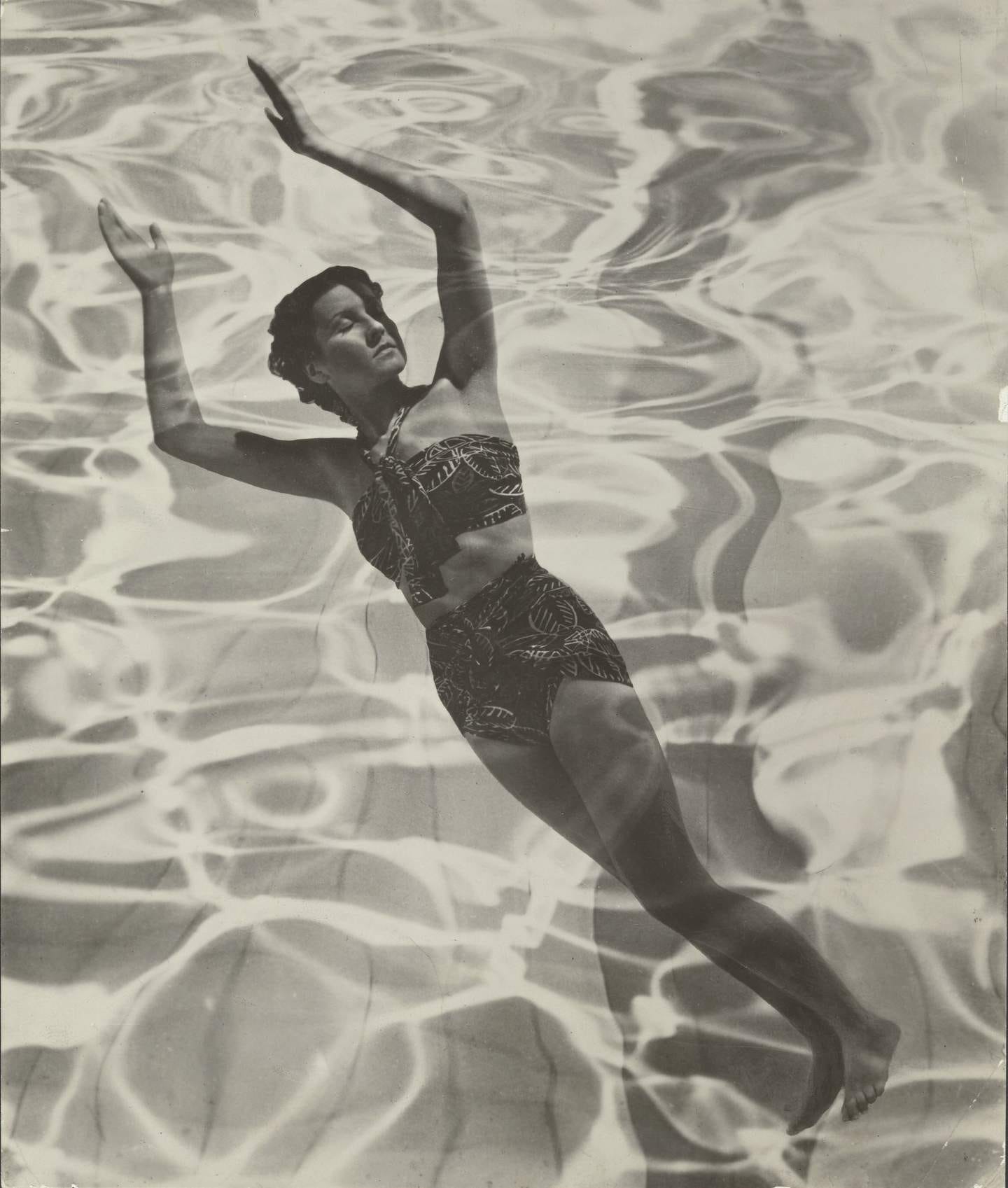
Wow, Luka. I put aside some time tonight especially to read this as I saw it was going to be a long read - and it absolutely did not disappoint!
I am definitely guilty of only really knowing about Lee Miller and Dora Maar through their respective links to Picasso. So it was really great how you put a focus on them as individuals here, and I am already hoping you do a full deep dive into Lee Miller's life at some point!
Also, I'm embarrassed to say I knew next to nothing about Kiki - so again, this was a great introduction and I really love that portrait of her by Constant Detré.
Plus it has reconfirmed for me why I've always had a fairly negative opinion of Man Ray too. (But obviously will never admit that if I am ever in Philadelphia!)
This subject of Muses in art feels like really fertile ground though. Not just in surrealism - but this has got me thinking of the relationships between so many others too i.e Jane Morris working with Dante Rosetti, or Gwen John collaborating with Rodin (and actually, vice versa too . . . Rodin himself was a bit of a muse to Gwen John in many ways!)
I mean, even Leonardo da Vinci technically had his muse with his pupil Salai . . . the young man who is said to have modelled for his famous John the Baptist painting, and ended up inheriting most of Leonardo's possessions after the great man died.
And in all of these cases, I think it is much like you describe with Dora Maar and Guernica too . . . i.e we too often forget that some really profound masterpieces only exist at all because there is a person to inspire them, along with the artist who creates them.
Anyway, there is a lot more I could say here - but I am conscious that this comment may already be spectacularly too long.
So to finish for now, thanks again for another brilliant article and for putting so much into your essays.
Oh, I absolutely love this! 🩷